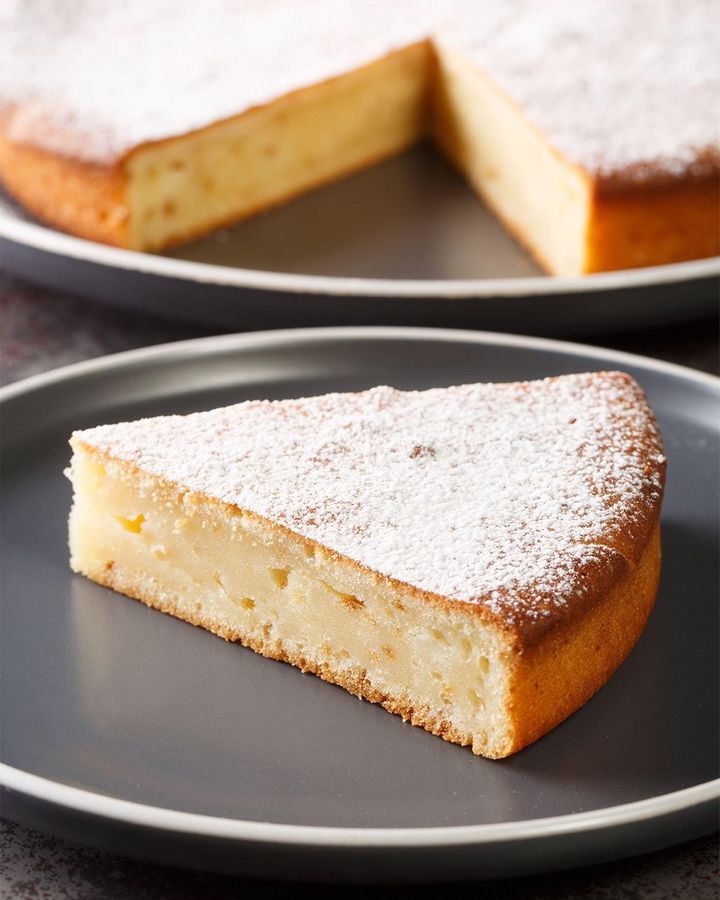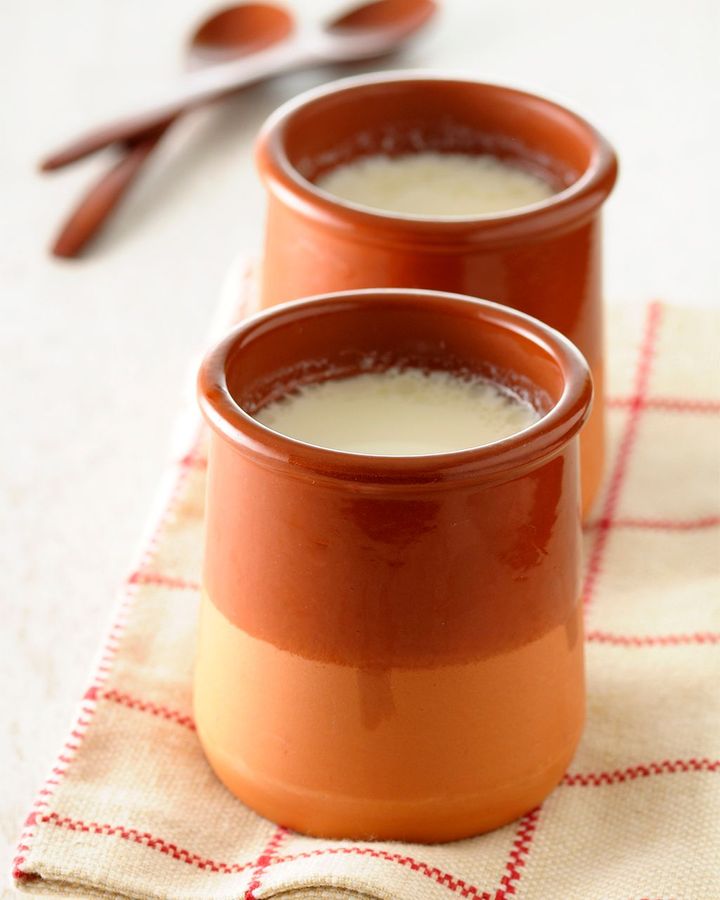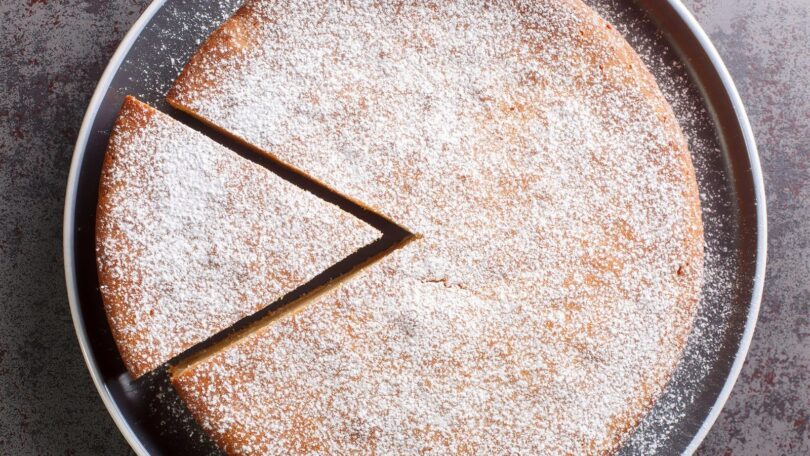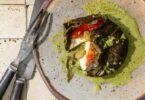Emily Monaco
France is land of ornate pastries, with shops laid out more like jewellers than bakeries. Shining rows of icing-topped eclairs beckon alongside tempting glazed fruit tarts. But visit a French home kitchen, and you’ll soon discover that these pâtisseries only tell half the story of French baked goods.
“When the French bake, and particularly when the French bake at home, their desserts are less sweet than ours,” explained American James Beard-winning food writer Aleksandra Crapanzano, a New York native who moved to France at the tender age of 10. She penned Gateau: The Surprising Simplicity of French Cakes with the goal of “demystifying” French home bakes, from buttery quatre-quarts (a type of pound cake) to flourless chocolate fondants to the bastion of cake simplicity: the gâteau au yaourt, a six-ingredient, one-bowl wonder that’s literally child’s play.
“By the time I got to France, everybody I knew, knew how to make yoghurt cake already,” she recalled. “They learn the yoghurt cake in maternelle (nursery school), and they have that recipe for the rest of their lives.”
That the cake is so frequently made by children may have something to do with the ratio-driven formula at its core: one part yoghurt to one part oil, two parts sugar and three parts flour; plus three eggs and leavening. Doubling as a delicious maths problem, the recipe doesn’t rely on a kitchen scale, like most French bakes, but rather on volume measures facilitated by the ubiquitous 125g terracotta yoghurt pot – a tool that has frequently found its way into Crapanzano’s US-bound checked luggage.
“Of course, I could use a measuring cup,” she said, “but it’s much more fun to do it this way.”
The simple batter, she said, bakes up moister than a pound cake with a light springiness. “It should have a delicate crumb but it’s not a fragile cake.”
Indeed, another reason the recipe is so kid-friendly is its forgiving nature, a quality Crapanzano attributes to the use of oil over butter, rendering even an accidentally overworked batter tender.
“I have seen kids who’ve whisked it five times and then got bored,” she said. “I’ve seen it where they have fun, and then they start whisking it at rapid speed… It still tastes great.”
With a muted sweetness balanced by the yoghurt’s welcome tang, “it’s just enough to make it a dessert, but not so much that it feels like it needs to be a special occasion.”
Indeed, birthdays and Sunday lunches in France are more often concluded with the wares of pro pâtissiers, architectural marvels of ganache, syrup and sponge sourced with care by the host. Homemade French cakes, on the contrary, are a testament to simplicity, devoid not just of icing (Crapanzano said she’s never seen a French person ice a cake at home, “except maybe at Christmas”) but also both salt and vanilla, which Crapanzano notes the French often eschew unless using them in starring roles, as in desserts like crème brûlée.
That isn’t to say a home baker couldn’t add one or both to the gâteau au yaourt; after all, the cake’s very simplicity renders it a “blueprint”, according to Crapanzano, a canvas upon which to play.
A dozen different gâteaux au yaourt dot the pages of her book: infused with pears and Poire Williams (a pear-flavoured brandy); with peach and verbena. In one recipe, almond flour lends more structure; in another, fruity olive oil dances with lemon and thyme. Home bakers, she says, can easily add their own spin, provided they stick with a base of whole milk yoghurt (Crapanzano prefers Fage, though dairy-free bakers could also begin with the oat yoghurt version developed by Apollonia Poilane, Crapanzano’s childhood neighbour.)
With enough tinkering, gâteau au yaourt can even rise through the ranks to special occasion status, as with Crapanzano’s “dinner party” recipe infused with orange, doused in a Grand Marnier syrup, and finished with a marmalade-rum glaze.
Be it in this more fanciful form or the six-ingredient baseline recipe (unsurprisingly the book’s first), yoghurt cake is above all a testament to French home baking’s everyday appeal: the cake of choice for the 16:00 goûter (after-school snack), for unexpected guests who drop by for coffee, or for a no-fuss midweek dessert.
“When you’re not trying to make something really rich and really sweet,” mused Crapanzano, “it becomes just a part of life.”
And moreover, it’s almost always within your reach. “It needs nothing but a bowl and a whisk,” said Crapanzano. “And a jar of yoghurt.”

France’s no-fuss gâteau au yaourt just needs a bowl, whisk and jar of yoghurt (Credit: Sergii Koval/Alamy)
Most begin their yoghurt cake journey with the simple, six-ingredient classic in Crapanzano’s recipe below. For those wanting to give the classic a touch more oomph, her version infused with just a touch of citrus and vanilla might be just the thing. And for that wow factor, her Dinner Party Yoghurt Cake, rendered extra moist with a Grand Marnier soaking syrup and topped with a rum glaze, elevates this childhood classic to a truly grown-up treat.
Gâteau au Yaourt (Yoghurt Cake) recipe
– Version 1
By Aleksandra Crapanzano
Method
Step 1
Preheat the oven to 350F (175C).
Step 2
Butter and flour an 8½ x 4½-in (22x11cm) loaf pan.
Step 3
Empty the yoghurt from its little jar into a mixing bowl. Add the eggs and whisk to combine. Using the empty yoghurt jar as a measuring cup, add 2 jars of sugar. Whisk well. Whisk in 3 jars of flour, the baking powder, then 1 jar of oil. Whisk until homogenous.
Step 4
Pour into the prepared pan and bake for 35-45 minutes, or until a knife inserted in the centre comes out clean.
—
Gâteau au Yaourt (Yoghurt Cake) recipe
– Version 2
Method
Step 1
Preheat the oven to 350F (175C).
Step 2
Butter and flour an 8½ x 4½-in (22x11cm) loaf pan.
Step 3
Whisk the yoghurt and eggs together. Whisk in the vanilla extract and lemon zest. Add the sugar and whisk to thoroughly combine. Add the flour, baking powder and salt and whisk just to combine. Add the oil and whisk until homogenous.
Step 4
Pour into the prepared pan and bake for 35-45 minutes, or until a knife inserted in the centre comes out clean.
Note: This recipe can also be made in an 8-in (20cm) springform or a 9-in (23cm) round cake pan. A 9-in cake will only take around 30-35 minutes to bake, whereas an 8-in round will take closer to 40 and a medium loaf between 35 and 45.

France’s yoghurt cake recipe relies on volume measures facilitated by the ubiquitous 125g terra cotta yoghurt pot (Credit: Riou/Getty Images)
—
Gâteau au Yaourt pour le Dîner (Dinner Party Yoghurt Cake) recipe
– Version 3
Method
Step 1
Preheat the oven to 350F (175C)
Step 2
Butter and flour an 8½ x 4½-in (22x11cm) loaf pan.
Step 3
To make the cake, combine the sugar and orange zest in a bowl and, using your fingertips, rub them together to distribute the citrus oils.
Step 4
Whisk the yoghurt and eggs together. Add the zesty sugar and vanilla and whisk to thoroughly combine. Add the flour, baking powder and salt and whisk just to combine. Add the oil and whisk just until homogenous.
Step 5
Pour into the prepared pan and bake for 35-45 minutes, or until a knife inserted in the centre comes out clean.
Step 6
Prepare the syrup by heating the Grand Marnier and orange juice in a microwave until warm, but not hot. Stir in the sugar to dissolve. Drizzle this over the cake while still warm. Let the cake cool.
Step 7
To make the glaze, warm the jam with the rum over low heat. Strain. Brush onto the cake once it has cooled to room temperature.
Note: This recipe can also be made in an 8-in (2-cm) springform or 9-in (22cm) round cake pan. A 9-in cake will only take around 30-35 minutes to bake, whereas an 8-in round will take closer to 40 minutes and a medium loaf between 35 and 45 minutes.
Courtesy: BBC







